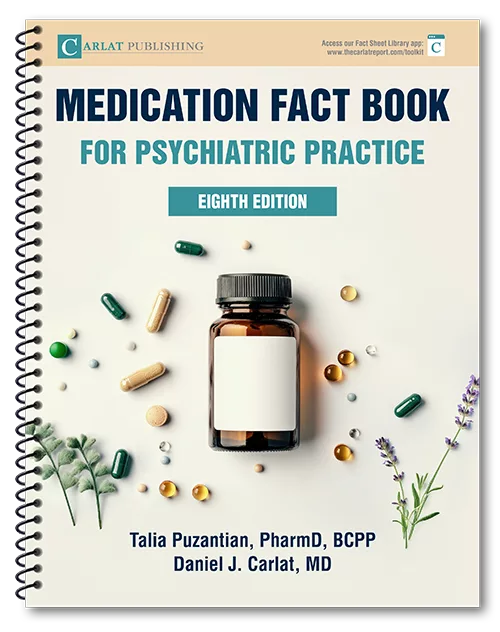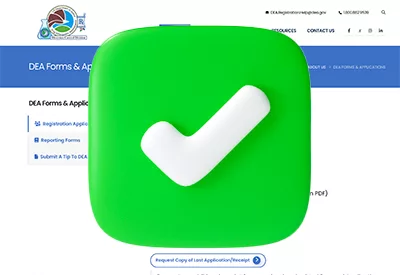New Combination Therapies

David Liebers, MD. Research Assistant Professor of Psychiatry, NYU Langone, Department of Psychiatry.
Dr. Liebers reports he is the principal investigator for Autobahn Therapeutics. Relevant financial relationships listed for the author have been mitigated. Dr. Aiken has reviewed this educational activity and has determined that there is no commercial bias as a result of this financial relationship.
With fewer psychiatric medications in the pharmaceutical pipeline, the industry is revisiting new combinations of older drugs. One example—bupropion-dextromethorphan—has already received FDA approval as Auvelity, a fast-acting antidepressant. In this article, I’ll peek into research on some of these new combinations to determine whether any are ready for clinical use.
Prazosin + cyproheptadine
Prazosin, an alpha-adrenergic blocker, is often used off-label for PTSD-related nightmares. Cyproheptadine, a serotonin (5-HT2A) receptor blocker and antihistamine first released in 1961 for hay fever, is sometimes used for serotonin syndrome, while smaller studies suggest it could have a role in depression, insomnia, nightmares, anorexia, and sexual dysfunction.
Bringing these two medications together as KT-110, Kinnov Therapeutics is testing the hypothesis that the noradrenergic and serotonergic systems are unsynchronized in addictions. The theory is that the overactive noradrenergic system drives cravings, while the impaired serotonergic response fails to regulate impulsivity. Supporting this idea, animal models have found that alcohol use improves when both systems are regulated with the prazosin-cyproheptadine combination, but not when either medication is used alone.
Kinnov has conducted a Phase II trial in 154 patients with severe alcohol use disorder (AUD). The combination reduced alcohol consumption with a moderate effect size (0.36–0.44) in both low (prazosin 5 mg, cyproheptadine 8 mg) and high (prazosin 10 mg, cyproheptadine 12 mg) doses (Aubin HJ et al, Addiction 2024;119(7):1211–1223). Kinnov’s combo uses prazosin extended-release, which is not available, but twice-daily dosing of standard prazosin can substitute. We recommend beginning with 1 mg nightly and increasing by 1–2 mg every 4–7 days to 5–10 mg/day. Common side effects include hypotension with prazosin and sedation and weight gain with cyproheptadine.
TCPR Verdict: While the prazosin-cyproheptadine combination awaits confirmation from a second trial, it may be appropriate for patients with PTSD and AUD.
Lurasidone + D-cycloserine
Lurasidone is FDA approved in schizophrenia and bipolar depression. D-cycloserine is an antibiotic that antagonizes glutamate in a manner similar to ketamine in the higher dose range (> 600 mg). Interest in D-cycloserine in psychiatry dates to the 1960s (Schade S and Paulus W, Int J Neuropsychopharmacol 2016;19(4):pyv102). It showed promise in a small augmentation trial in unipolar depression; more recently, it improved depressive symptoms and reduced suicidality in an RCT of 50 patients with treatment-resistant depression (Heresco-Levy U et al, Int J Neuropsychopharmacol 2013;16(3):501–506; Cole J et al, JAMA Psychiatry 2022;79(12):1153–1161).
NeuroRx Pharmaceuticals is developing a combination of lurasidone and D-cycloserine as NRX-101 for bipolar depression. The logic: (1) D-cycloserine may lower the risk of akathisia with lurasidone, while lurasidone may prevent psychosis on D-cycloserine; (2) the combination may prevent depression after successful treatment with ketamine. In a Phase II trial of severe bipolar depression, the combination improved depression and suicidality scores better than lurasidone alone after a single ketamine infusion, earning it fast track designation from the FDA (Nierenberg A et al, Int J Bipolar Disord 2023;11(1):28). A second larger trial found reduced akathisia with this combination. Trials in mood disorders are ongoing, including protocols with and without prior ketamine infusion.
The ketamine trial started with daily doses of 16.5 mg lurasidone and 350 mg D-cycloserine, which increased to 66 mg and 950 mg, respectively, after 5 days. At higher doses, D-cycloserine may deplete vitamin B6 levels, so daily supplementation (100 mg) is recommended.
TCPR Verdict: The lurasidone + D-cycloserine combo is best reserved as a last resort for treatment-resistant bipolar depression. Although generic, D-cycloserine is expensive and carries a rare risk of psychosis, mania, and delirium.
Atomoxetine and sleep apnea
Up to half of people with obstructive sleep apnea (OSA) cannot tolerate long-term continuous positive airway pressure, the mainstay of treatment. This has driven a search for oral alternatives. Apnimed is developing three combinations: atomoxetine + aroxybutynin (AD109), atomoxetine + trazodone (AD504), and atomoxetine + spironolactone (AD113).
Atomoxetine is a norepinephrine reuptake inhibitor approved for ADHD. It is thought to improve OSA by stimulating upper airway muscles. When used on its own in OSA, atomoxetine reduces the apnea-hypoxia index by about 50%, statistically greater than placebo (Schweitzer PK et al, Am J Respir Crit Care Med 2023;208(12):1316–1327). The rationale for the combinations:
Trazodone: An antidepressant that prevents nocturnal awakenings in OSA by increasing the respiratory arousal threshold (50 mg QHS).
Oxybutynin: An antimuscarinic agent that deepens sleep and improves tongue muscle responsiveness, preventing it from blocking the airway (2.5–5 mg QHS). (It is also being tested as its R-enantiomer, aroxybutynin, which is not commercially available.)
Spironolactone: A diuretic that reduces fluid retention in the upper airway (50 mg QHS) and is also thought to reduce the risk of blood pressure increases with atomoxetine alone.
Eight randomized trials have tested these combinations with positive results. Most were small (n < 50), and the best-designed was a Phase II trial of atomoxetine-aroxybutynin in 211 patients. While these trials support combination treatments, several studies have tested atomoxetine on its own with similar benefits (75–80 mg QHS).
Atomoxetine’s potential to bring meaningful benefits to ADHD and OSA is not trivial. In childhood ADHD, the rate of OSA is 20%–30% (Youssef NA et al, Ann Clin Psychiatry 2011;23(3):213–224). The rate of OSA in adult ADHD is not known, but OSA’s prevalence increases with age, from 1%–5% in children to 15% in young adults and 17%–38% in middle-aged and older.
TCPR Verdict: While oxybutynin and spironolactone have no psychiatric uses, atomoxetine offers dual benefits for patients with ADHD and OSA. If depression or insomnia is also present, combining atomoxetine with trazodone may bring further benefits. For more information, see the table “Novel Combinations in the Pipeline.”
Newsletters
Please see our Terms and Conditions, Privacy Policy, Subscription Agreement, Use of Cookies, and Hardware/Software Requirements to view our website.
© 2025 Carlat Publishing, LLC and Affiliates, All Rights Reserved.



_-The-Breakthrough-Antipsychotic-That-Could-Change-Everything.webp?t=1729528747)



